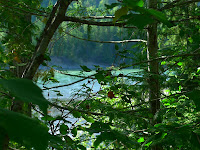
Seattle was always a planned stop. Lizzie lives there. At one time there was some thoughts of spending time exploring the Olympic National Park or seeing other places outside of Seattle. Visiting places in the Seattle area will have to wait for another vacation. We toured Seattle for a couple of days and it was great. Seattle is a fun place to visit, especially when the weather is nice. Judy Washburn rejoined us for this last bit of travel time.
 After picking Judy up from the airport we visited Gasworks Park. This park was once an old coal fuel plant. They started to tear down the old buildings after a fire destroyed the plant. Then they realized these old buildings were a piece of art. Seattle is full of outdoor art. The remaining buildings became a Seattle attraction. There was a big hill on the other side of the gasworks art; kite fliers enjoyed the water breezes coming up the crest of the hill. This park faced Lake Union.
After picking Judy up from the airport we visited Gasworks Park. This park was once an old coal fuel plant. They started to tear down the old buildings after a fire destroyed the plant. Then they realized these old buildings were a piece of art. Seattle is full of outdoor art. The remaining buildings became a Seattle attraction. There was a big hill on the other side of the gasworks art; kite fliers enjoyed the water breezes coming up the crest of the hill. This park faced Lake Union. Our next stop was to visit the Chittenden Locks (Ballard Locks are their local name). It was fascinating to see the locks in action. They were very busy with traffic from the Puget Sound to Lakes Washington and Union. Boats were constantly traveling out toward the ocean or coming in. This process was so interesting that we came back the next day to watch the boat procession again. Some of the fancy yachts were impressive. I think listening to the CD book about building the Panama Canal peaked our interest in locks.
Our next stop was to visit the Chittenden Locks (Ballard Locks are their local name). It was fascinating to see the locks in action. They were very busy with traffic from the Puget Sound to Lakes Washington and Union. Boats were constantly traveling out toward the ocean or coming in. This process was so interesting that we came back the next day to watch the boat procession again. Some of the fancy yachts were impressive. I think listening to the CD book about building the Panama Canal peaked our interest in locks.The highlight of our Seattle tourist activities was taking the Duck Tour. The ducks are vehicles built for storming Normandy beaches and islands in the Pacific during WWII. In the water or on land these vehicles do not travel very quickly. The soldiers unlucky enough to be on them during WWII felt like sitting ducks, hence their name. After WWII, production of these vehicles ceased; all ducks in use were built in the 1940s. Our driver kept us entertained with Seattle trivia and music while we visited all the tourist spots. The picture of GasWorks Park was taken from the duck while it was floating on Lake Union. After the trip we all agreed it was a great way to spend our time.

The duck starting and stopping point was across the street from the Experience Music Project Science Fiction Museum. I could not resist taking a picture of these riveting building. Frank O Gehry designed the building and Paul Allen paid for it. With the combination of a large budget and a genius architect, it was not surprising to see that this functional building is also a work of art. In the background of the picture, the bottom of the Space Needle is visible.
 This picture displayed my favorite piece of art from the outdoor sculpture garden. We toured the garden on our way to Pike's Market. Having been to Seattle before I wanted to revisit this food and crafts mega-market.
This picture displayed my favorite piece of art from the outdoor sculpture garden. We toured the garden on our way to Pike's Market. Having been to Seattle before I wanted to revisit this food and crafts mega-market. 
That night we ate at Tutta Bella, an excellent local Italian restaurant. Their pizzas were amazing. They had some interesting foods on their pizzas; one I want to try to recreate at home. Lizzie works there; she knew to order this seasonal special pizza. Here was our group at the restaurant.
 We had heard about the troll under the bridge from the duck tour, another piece of outdoor art in Seattle. We were determined to find said creature. Without Lizzie to direct us, we did not know what to look for. One of our last Seattle stops was to visit the troll and pose for an end of journey picture.
We had heard about the troll under the bridge from the duck tour, another piece of outdoor art in Seattle. We were determined to find said creature. Without Lizzie to direct us, we did not know what to look for. One of our last Seattle stops was to visit the troll and pose for an end of journey picture.
















































